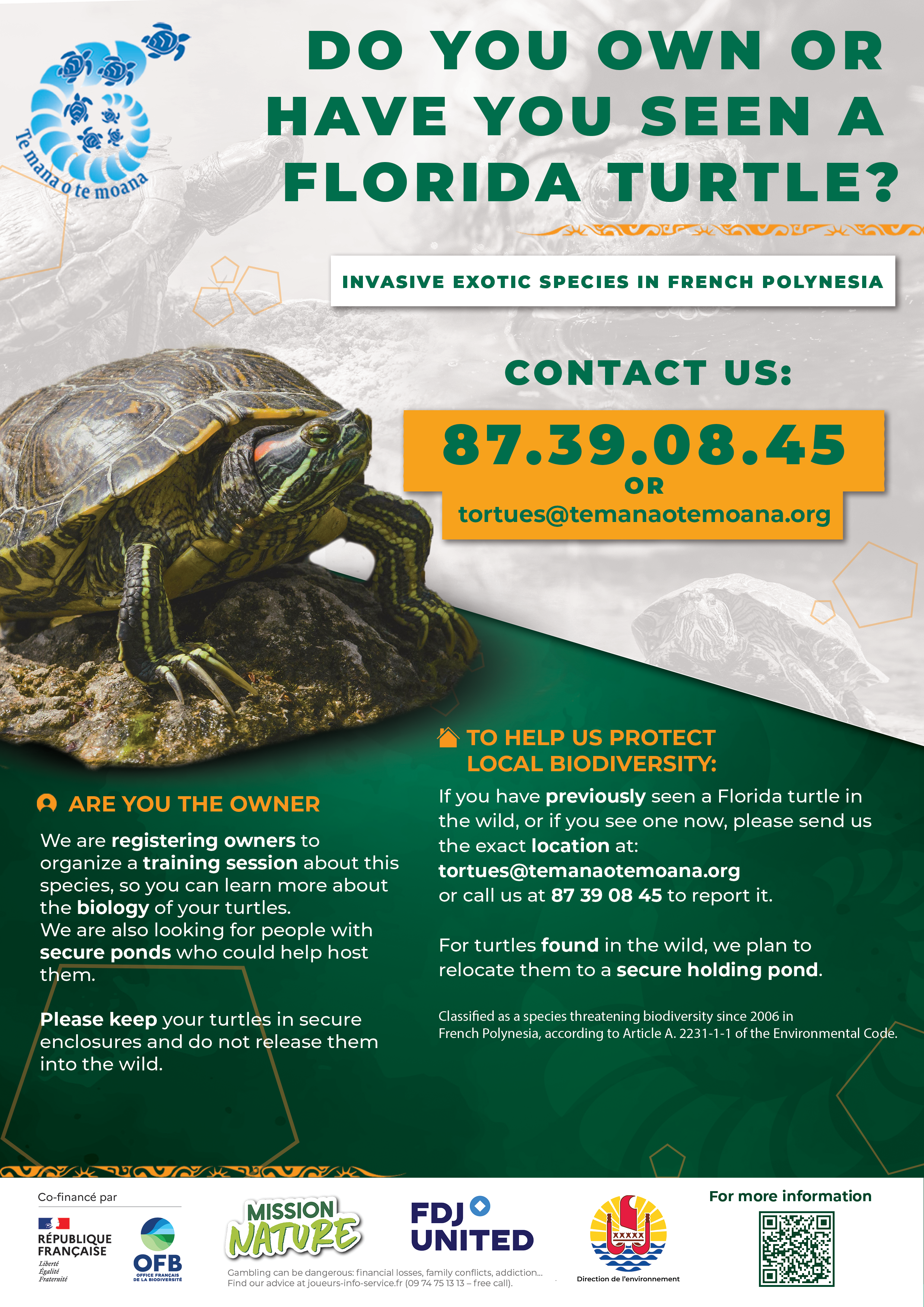OUR PROGRAMS
RESET Project
REStoration of Coastal Ecosystems in Tahiti: fighting against the invasive species Trachemys scripta to restore natural ecosystems associated with river mouths and coastal areas in order to preserve indigenous biodiversity.
The Florida turtle (Trachemys scripta elegans), introduced to Tahiti in the 1970 as a pet and gradually released into the wild, is an invasive species posing a major threat to local biodiversity. By competing with native species and exerting increased trophic pressure, it disrupts freshwater ecosystems and alters the composition of endemic plant communities.
The association Te mana o te moana, specialized in caring for sick and injured sea turtles in French Polynesia, receives a growing number of reports of Florida turtles observed at the mouths of Tahiti’s rivers. However, no concrete solution has yet been implemented to manage these individuals, which continue to multiply uncontrollably to the detriment of local biodiversity.
This project therefore aims to curb the spread of this invasive species and restore the health of Tahiti’s coastal ecosystems, while creating a sanctuary to house the captured individuals.
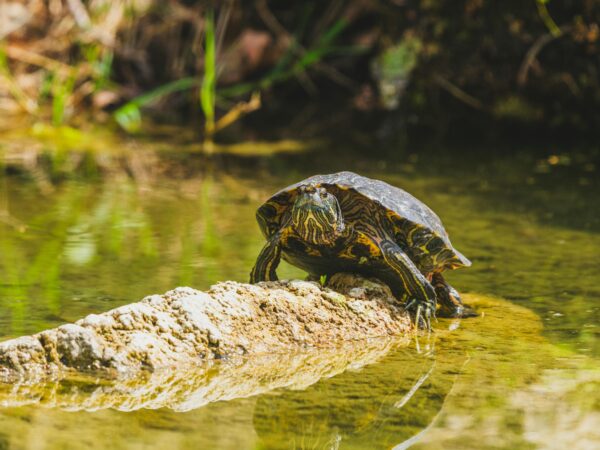
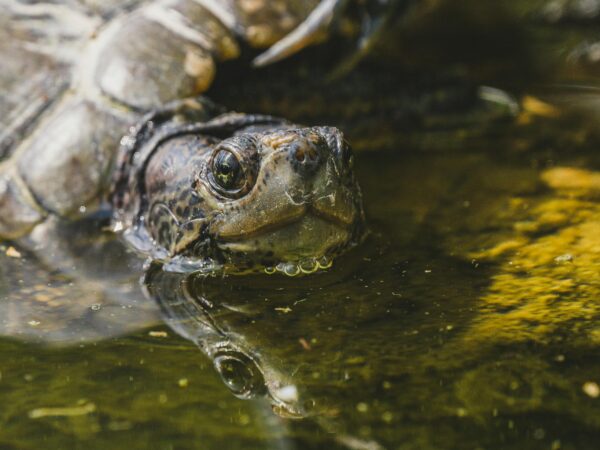
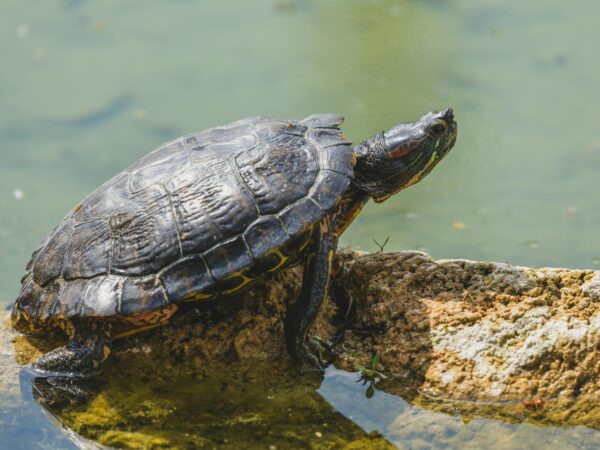
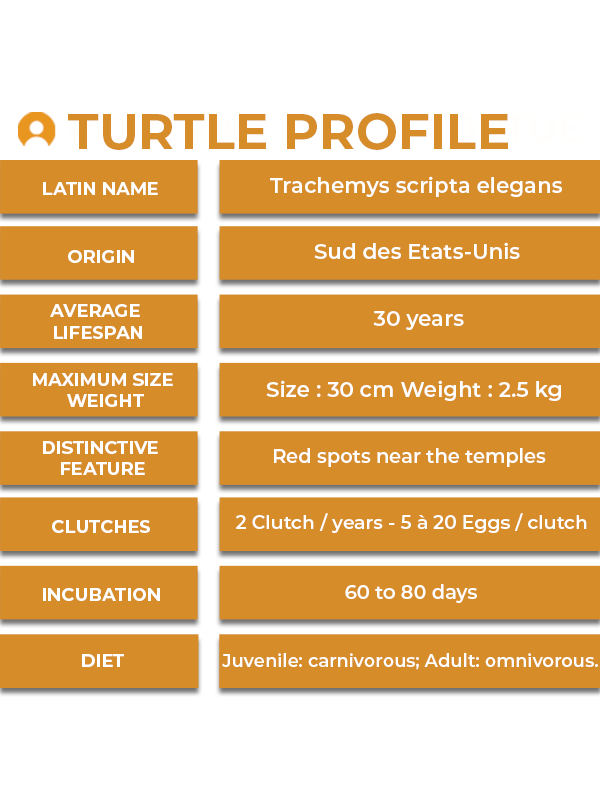
Do you own or have you observed a Florida turtle?
Note the exact location where the turtle was seen and CALL 87 39 08 45.
Project objectives :
Conduct a comprehensive two-year study to assess the impact of Trachemys scripta on Tahiti’s freshwater ecosystems, identify the most affected areas, and implement appropriate ecological restoration actions.
-
Identification of priority intervention areas
-
Development and implementation of a management and capture protocol
-
Reduction of Trachemys scripta populations
-
Ecological restoration of degraded river mouths
-
Scientific monitoring and evaluation of results
-
Awareness-raising and involvement of local stakeholders
KEY FIGURES

This is the annual cost of invasive alien species for EU member states.*
Some of the world’s most invasive species are present in at least one French overseas territory.*
Only remarkable ecosystems are in good conservation status*
Partners
-
- This is an ambitious "research-conservation" partnership involving the French Biodiversity Office (OFB) and the association Te mana o te moana.

